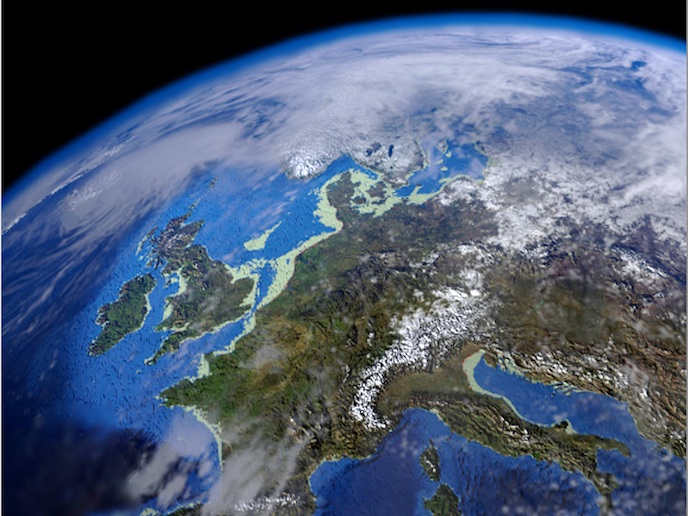Exploring Europe’s lost frontiers
Nearly 18 000 years ago, the Ice Age ended and everything began to change. “As the climate warmed and the ice melted, sea levels rose by as much as 120 metres, submerging huge areas of coastline and essentially erasing them from the archaeological record,” says Vincent Gaffney, a professor of archaeology at the University of Bradford(opens in new window). Not only were new coastlines formed, Europe’s environment transformed from tundra to woodland. As the landscape changed, so too did the world economy, shifting from hunter-gatherer societies to agrarian ones. Because coastlines were frequently the most productive landscapes for hunter-gatherer communities, it has been assumed that these submerged landscapes were once home to early human settlements. “Much of Europe’s archaeological history was written without knowing anything about these settlements that now lay hidden under metres of water and sand,” notes Gaffney. “Exploring these lost landscapes is one of the last great challenges of archaeology and geology.” Stepping up to this challenge is Lost Frontiers(opens in new window), an EU-funded project coordinated by Gaffney. With partners coming from around the world, the project started by using data collected for the oil and gas industry to map nearly 85 000 km2 of lost prehistoric landscapes under the North Sea. But, as Gaffney explains, this mapping stops short of providing information on vegetation and people – information that is critical to understanding this hidden history. So, as a second step, the project gave this landscape information to surveying ships, which went to sea and collected sediment core samples from prehistoric river channels located below the seabed. “Our experts are able to reconstruct the environment of this lost country using pollen, diatoms and DNA extracted directly from these samples,” explains Gaffney. “The cores also provide accurate dates for inundation, and the team uses this data to model sea level rise and its impact on the prehistoric landscape.”
Before it’s too late
The European Research Council(opens in new window) supported project has already made several important discoveries. For instance, in about 6 200 BC, a massive area of land moved off the coast of present-day Norway, causing huge tsunamis that likely devastated the coasts of Scotland and Scandinavia. “Interestingly, we discovered that it was not the tsunamis that wiped coastal hunter-gatherer communities off the map in the southern North Sea, but the inexorable rise in sea levels caused by climate change,” remarks Gaffney. The project is one of the first to find evidence of human settlement beneath the North Sea. With the help of colleagues from the Flanders Marine Institute(opens in new window) and the Belgian Navy, which supplied a boat, the team recovered the first archaeological artefact (a fragment of a flint hammerstone) to be found by direct prospection anywhere in the world. “This gives us reason to believe that we have the capacity to locate areas of prehistoric settlement,” says Gaffney. The challenge now is to locate such settlements before it’s too late – nearly all this prehistoric land is set to be developed, primarily as wind farms. “It’s ironic that our ability to explore these lands, which were lost to climate change, is now being threatened by our trying to prevent the same fate from happening to us,” concludes Gaffney.







